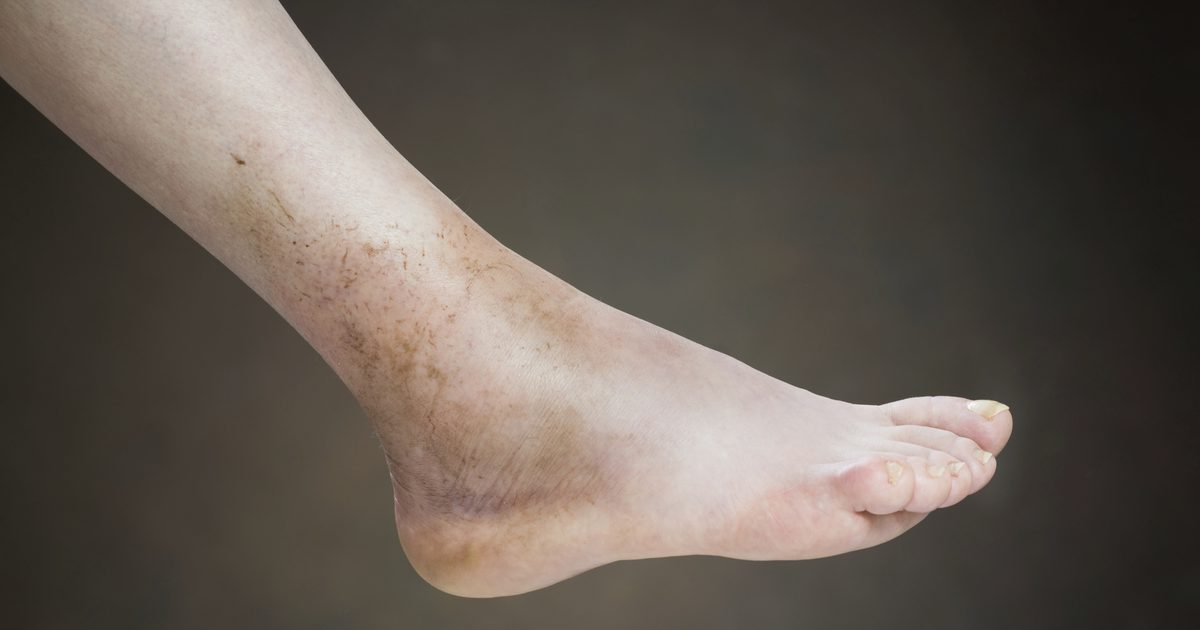Symptoms Of Osteomyelitis To Watch For
Osteomyelitis is a condition caused by an infection in the bones. It causes a patient to experience pain in the leg bones primarily, but it can also affect the arms and back. Individuals are at an increased risk of developing osteomyelitis if they have recently fractured a bone, been injured, or have had surgery, or if they have an artificial element such as a hip or screw in the body. A weakened immune system can also make the body more susceptible to developing osteomyelitis, as can blood infections and diabetes. Though osteomyelitis typically disappears with antibiotics, it can cause permanent damage to the bones if it progresses and is left untreated.
Nausea

Feeling nauseous is one of the main indicators of osteomyelitis. Unfortunately, nausea can be a symptom of many diseases and conditions, making it difficult to concretely associate with this bone infection. Nausea can present as an upset stomach, leaving you feeling as though you might vomit. The tummy can feel like its turning and churning, causing you to feel generally unwell. Any infection can lead to these feelings, as the body tries to fight back against invaders. Many antibiotics also list nausea as a main possible side effect, meaning your treatment options may not alleviate this symptom once you are diagnosed.
Swelling

Swelling is also a tell-tale sign of infection, and this is no different when the bones are concerned. Patients with osteomyelitis may feel swelling in the long bones of the legs, in the arms, across the back, and in the ankles, feet, and hands. This occurs as the body attempts to fight off the infection. It can also affect the tissue and muscle surrounding the affected bone. The build-up of pressure can occur in varying degrees, from mild to fairly intense and painful. If it does not go down after a few days, this is certainly cause to alert a medical professional, particularly if the area in question has not been injured recently.
Reduced Range Of Motion

Osteomyelitis can also cause a patient to have a reduced range of motion, especially in the area of infection. Bones can feel 'tight' or 'locked,' limiting movement. Everyday tasks and normal activities can become challenging, requiring more energy and exertion and potentially causing pain in the process. It is not uncommon for patients with osteomyelitis to develop a limp or otherwise altered gait in response to the bone infection. If the condition affects the back, twisting and bending can become quite a struggle. When the arms are impacted, reaching, holding, and grabbing abilities can also be altered. This can put patients at a greater risk of falling or incurring other injuries.
Tender And Red Infected Area

Patients who suspect osteomyelitis may also notice their skin becoming tender and red around the infection. The bones can feel weak, fragile, and flimsy, but the tissues, muscle, and skin can also show signs of infection. Tenderness can range from mild discomfort to impairing one's movement, while redness can be bright and obvious as well as light and pink. It is typically the legs, arms, ankles, feet, and hands that undergo a color change as a result of osteomyelitis, but other parts of the body can also show this symptom. It's important to monitor the appearance of the skin, particularly after an injury, trauma, or surgical procedure.
Fever

Having a fever can also be indicative of osteomyelitis, though this is a common symptom of many diseases. Fever is typically mild, though it can rise to dangerous levels if the disorder progresses. A high temperature can also lead the patient to experience noticeable chills, excessive sweating, and paleness. The hands, feet, and forehead may become clammy, and the skin can wash out to appear grey or green. Furthermore, having a high temperature can cause mild to severe delirium. Regardless, it is always a dangerous sign, no matter what the underlying cause is, and it needs to be treated quickly before rising to a dangerous level.
Back Pain

Like other infections, osteomyelitis can present with significant pain. Specifically, with osteomyelitis in the vertebrae, patients often experience severe, persistent back pain that worsens at night or with movement. Osteomyelitis-associated back pain can affect numerous areas of the spine, including the neck (cervical), the mid-back (thoracic), the lower back (lumbar), as well as the sacrum (sacral). Depending on the area affected and the patient, back pain in osteomyelitis can radiate or travel to other areas of the body. Of course, severe back pain can be the result of a number of other issues, including an improper mattress and insufficient support, so it is important to be on the lookout for other signs of osteomyelitis.
Fatigue And Lethargy

Whenever the body is fighting off an infection, it uses most of its energy to do so (particularly when the infection is severe). This often leaves the body in a state of fatigue and is largely the reason why many treatments for infections include getting a lot of rest. Resting the body ensures it can use as much energy as possible to fight against the infection at hand. It is no different with osteomyelitis. The infection takes up a lot of energy, leaving patients fatigued and lethargic, even when they do get the same rest as they would without the infection (they need more). Fatigue and lethargy are also closely connected to feeling irritable, which is especially true in children affected by this condition.
Weight Loss

While weight loss may not always occur in acute cases of osteomyelitis, weight loss is a significant symptom with recurrent bone infections and therefore, often appears with chronic instances of osteomyelitis. It is also important to note weight loss in osteomyelitis appears to be unexplained. It is not, therefore, weight loss because of increased exercise, adjustments in diet, or from other illnesses or clear causes. That said, when osteomyelitis causes weight loss, it is often the result of lost mineralization in the bones, decreased appetite, and even associated conditions, such as diabetes.
Pus Drainage

In osteomyelitis, patients open experience pus draining through the skin or open wounds near the site of infection. Pus drainage in osteomyelitis can be either intermittent or constant. Drainage due to this condition occurs when a sinus tract forms from the osteomyelitis-infected bone to the surface of the skin, providing the space from which pus drains. Of course, pus can also build up under the skin and form what is called an abscess, which will need to be cleaned and drained. This is crucial so the bone and surrounding area can begin to heal effectively.
Changes In Walking

Many of the other symptoms and effects of osteomyelitis have one ultimate thing in common: they affect the patient's ability to walk. What causes the changes in walking include the pain in the bones due to the infection, the decreased ability to use the bone for support and movement, as well as attempting to avoiding putting pressure on tender and swollen joints. This makes it clear that osteomyelitis may not actually take away the individual's ability to walk unassisted. It may simply just force them to adjust how they walk. In some cases, they may need external assistance to keep walking efficiently.
